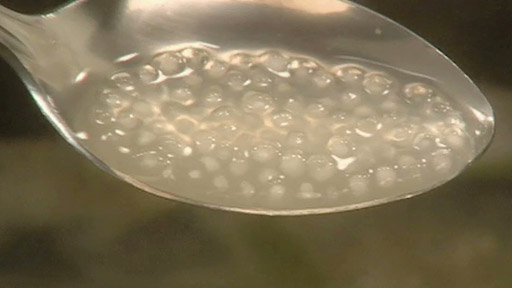Sago v. Tapioca
- What’s the difference between sago and tapioca, and where do they come from? Some people I’ve talked to haven’t heard of either, and those that have often think both come from the fruit of a sago palm. It’s not helped by some packets of dried sago saying they are both sago and tapioca.
- So for anyone who likes lemon or chocolate sago, like me, I thought I better find out. It turns out they have quite different botanical origins, although the final product is pretty similar.
- ‘Sago’ is from the pith, or middle part, of the trunk of a Sago Palm (Metroxylon sagu) or similar species of palm such as Metroxylon warburgii, which we used to have growing in our Tropical Centre (it needs full tropical conditions). The trunk of some cycads such as Cycas circinalis are also used for what is called ‘sago’.
- The Sago Palm dies after flowering, but produces new trunks from the base. To get sago, the palms are chopped down after 10-15 years (just before they flower) and cut into sections so the starch can be removed from the middle of the ‘trunk’.
- ‘Tapioca’ on the other hand comes from Cassava or Manioc (botanically Manihot esculenta), a popular tropical crop (which has many other uses) which is very resistant to insect attack due to high levels of cyanide. The tuber, which is used to make the tapioca, is squeezed in water and dried to remove all cyanide. It matures to a small tree in only 12 months, when the starch can be removed. The root is very like a sweet potato (which is botanically quite different again).
- How are the beads made? Both sago and tapioca are produced by separating the starch from other parts of the plant, and then making a gooey dough. The dough is then forced through a sieve before heating at high temperatures. You can also get granulated forms which are produced by grinding the flaky original dough.








0 comments:
Post a Comment